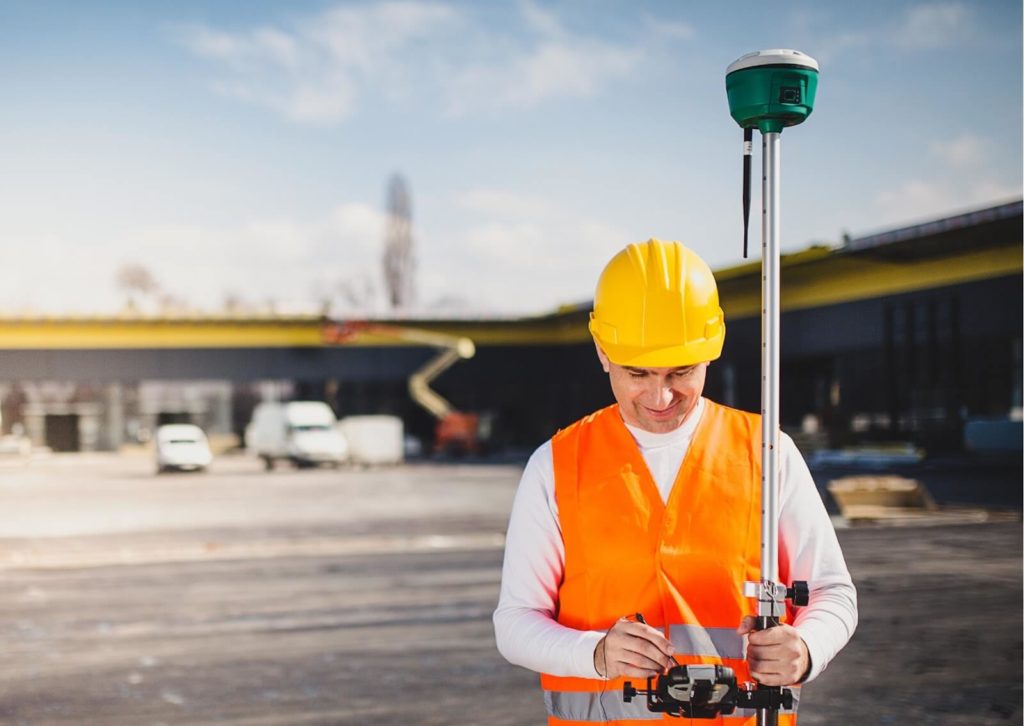Thinking of getting a GPS survey done for your upcoming project? If you’re an architect, engineer, planner or developer, get a GPS survey with detail that is unparalleled.
At the touch of a button, the GPS survey will collect data and geometrical calculation by using satellites sending signals to receivers on the ground.
No matter what industry you work in, the GPS survey will be able to help you with noninvasive and accurate measuring.
So let’s get your project started on the right foot and see how a GPS survey works.
What is a GPS survey?
The GPS, also known as the Global Positioning System is a satellite-based navigation system which enables surveying professionals across multiple industries to collect reliable and accurate coordinates of latitudes and longitudes without the need for measuring distances and angles between points.
How does a GPS survey work?
It’s actually more simple than you might think. The global positioning system uses a network of satellites to transmit data to and from the ground or receivers.
Receivers on the ground communicate with the satellites to gain accuracy of longitude and latitude of the point on the ground.
As the receiver begins to communicate with a satellite, four surrounding satellites will transmit data measuring the satellite’s precise location, time of the reading and the distance to the height of the receiver.
Did you know…?
This satellite-based navigation system was initially developed for military use in the 1970’s but GPS became fully operational in 1993 and later commercialised for industries such as surveying.

What are the benefits of a GPS survey?
There are some strong benefits to investing in a GPS survey before the development of any construction plans.
- Not weather dependent: No matter the weather conditions or time GPS can triangulate the signal and provide a location.
- Accuracy: Provides accurate geographic measurements.
- Mobility: Easily transferred or transported to different locations.
- Convenience: Can be used on any given site at the touch of a button
Want to know more about the benefits of a GPS survey? Get in touch with Midland Survey today for a quick quote.
How is a GPS Survey done?
We’ll take you through the three primary methods of GPS measurement that surveyors use. They are Static GPS Baseline, Real-Time Kinematic Observations and Continuously Operating Reference Stations.

STATIC GPS BASELINE
This method is particularly useful for long range distances and measurements. A static baseline technique is used to detect the accurate distance between two points.
Two receivers are placed at the end of the line to be measured. The two receivers then collect GPS data for a minimum duration of 20 minutes.
A specially curated software program is then used to calculate the distance between the two receivers.
REAL-TIME KINEMATIC OBSERVATIONS
Unlike the Static GPS Baseline technology, Real-Time Kinematic Observations have one static receiver known as the Base Station and the other receiver on a Rover Station which moves to multiple positions during the measuring process.
This method is ideal for harvesting data over slightly smaller areas.
CONTINUOUSLY OPERATING REFERENCE STATIONS
The continuously operating reference station or CORS is unique in its data collection because the base station is installed in a known permanent location. This means localised measurements will send signals to this fixed base station.
You’ll find CORS being used for the purpose of major engineering construction projects that require ongoing surveying over a continuous period of time.
Typically, surveyors will offer you a 2D version of the data collected. We know the importance of clarity and that’s why we’ll provide you with 3D topographical surveys.
How to get a GPS survey
After the data is collected, our team will guide you through the results and help you develop an informed plan of your upcoming project. All of our topographical surveys will leave you with a solid understanding of the surrounding built environment and infrastructure.
Knowing which GPS survey method is appropriate for your upcoming project is key. Get a quick quote from our team at Midland Survey. Our expert team will guide you through the process and give you the assurance of accuracy from the get go.